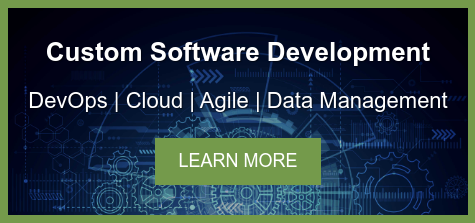.png?width=734&height=367&name=Blog%20Headers%20(13).png)
In the realm of modern technology, the debate between serverless and non-serverless computing continues to influence how businesses deploy their applications. Understanding the fundamental disparities between these two paradigms is crucial for organizations aiming to optimize costs, efficiency, and scalability in their IT infrastructure.
Serverless and non-serverless computing represent distinct approaches to managing software applications and services. While both strategies share certain aspects, they diverge significantly in terms of responsibility allocation, customization levels, scalability, and cost-effectiveness.
Defining the Divide
Serverless and non-serverless computing are two different approaches to building and delivering software applications and services. While they have similarities, some differences make them suitable for different use cases.
Non-serverless computing refers to the traditional approach where the organization is responsible for provisioning, scaling, and infrastructure maintenance. Serverless does not mean there are no servers. It simply means that provisioning, scaling, and infrastructure maintenance are the cloud provider's responsibilities. In non-serverless computing, the organization has complete control over the environment; hence, it is more customizable. Serverless computing, on the other hand, does not offer so much flexibility as the provider is the one who allocates and manages the resources necessary to run the code. Furthermore, in the non-serverless infrastructure, the organizations are responsible for the management and maintenance efforts in the non-serverless infrastructure, including upgrading and patching. Therefore, it can be more time-consuming and expensive than serverless computing, where users only pay for the resources consumed while the code is executed.
Customization vs. Automation
In the non-serverless landscape, organizations enjoy unparalleled customization capabilities, tailoring their infrastructure to specific needs. However, this granular control requires dedicated efforts in managing, upgrading, and securing the infrastructure, potentially leading to increased time and expenses.
In contrast, serverless computing prioritizes automation and scalability. While offering less flexibility in customization due to the cloud provider managing resource allocation, it significantly reduces operational burdens. Users only pay for resources consumed during code execution, which proves cost-efficient for applications with sporadic or variable workloads.
Scalability and Resource Utilization
One of the key advantages of serverless computing is its seamless scalability. Cloud providers dynamically allocate and de-allocate resources as per workload demands, ensuring optimal performance without unnecessary provisioning costs. This flexibility makes it an attractive option for organizations expecting future resource needs or dealing with fluctuating workloads.
Conversely, non-serverless computing might be a better choice for applications with stable resource demands. Though it offers control and customization, organizations must provision and pay for resources continuously, regardless of their utilization rate, potentially leading to inefficiencies and increased costs.
Choosing Wisely
The choice between serverless and non-serverless computing should be based on the specific requirements and constraints of the particular organization.
Because in non-serverless computing, the users pay for infrastructure maintenance, it may not be the best option for organizations with complex applications that require large amounts of computing resources. On the other hand, in serverless computing, resources are being utilized without consideration of the server's capacity. Therefore, the cloud provider can provision, and de-provision resources as needed to accommodate workloads at any time, which allows for better scalability. Hence, serverless computing may be a better option for organizations with more complex applications that may require the allocation of additional resources in the future. Decisions should also be made based on the amount of actual server usage. For example, in serverless computing, the organizations only pay for the resources they use, so they can save money compared to non-serverless computing, where they need to provision and pay for resources even when they are not being utilized. On the other hand, a serverless solution will not be ideal if the task duration exceeds 5 minutes (here, pricing is based on the runtime, which can get very expensive if there is a lot of usage). In addition, non-serverless computing would be suitable for organizations that need more control and customization over the environment, while serverless computing is well-suited for organizations that want to reduce operational overhead and enjoy the benefits of automatic scalability.
In Conclusion
In essence, the choice between serverless and non-serverless computing depends on various factors, including the level of control desired, cost considerations, scalability needs, and the nature of the applications. Organizations seeking absolute control and customization might opt for non-serverless computing, while those prioritizing cost-efficiency, scalability, and reduced operational overhead may find serverless computing more appealing.
By understanding the nuances of each approach and aligning them with specific business objectives, organizations can make informed decisions, optimizing their infrastructure for enhanced performance, cost-effectiveness, and agility in an ever-evolving technological landscape.
Dragonspears specializes in providing tailored solutions and expert guidance to help businesses navigate the complexities of modern technology, offering strategic insights and innovative approaches to optimize infrastructure, streamline operations, and harness the power of emerging technologies for sustainable growth and success. Contact us today to learn more!


